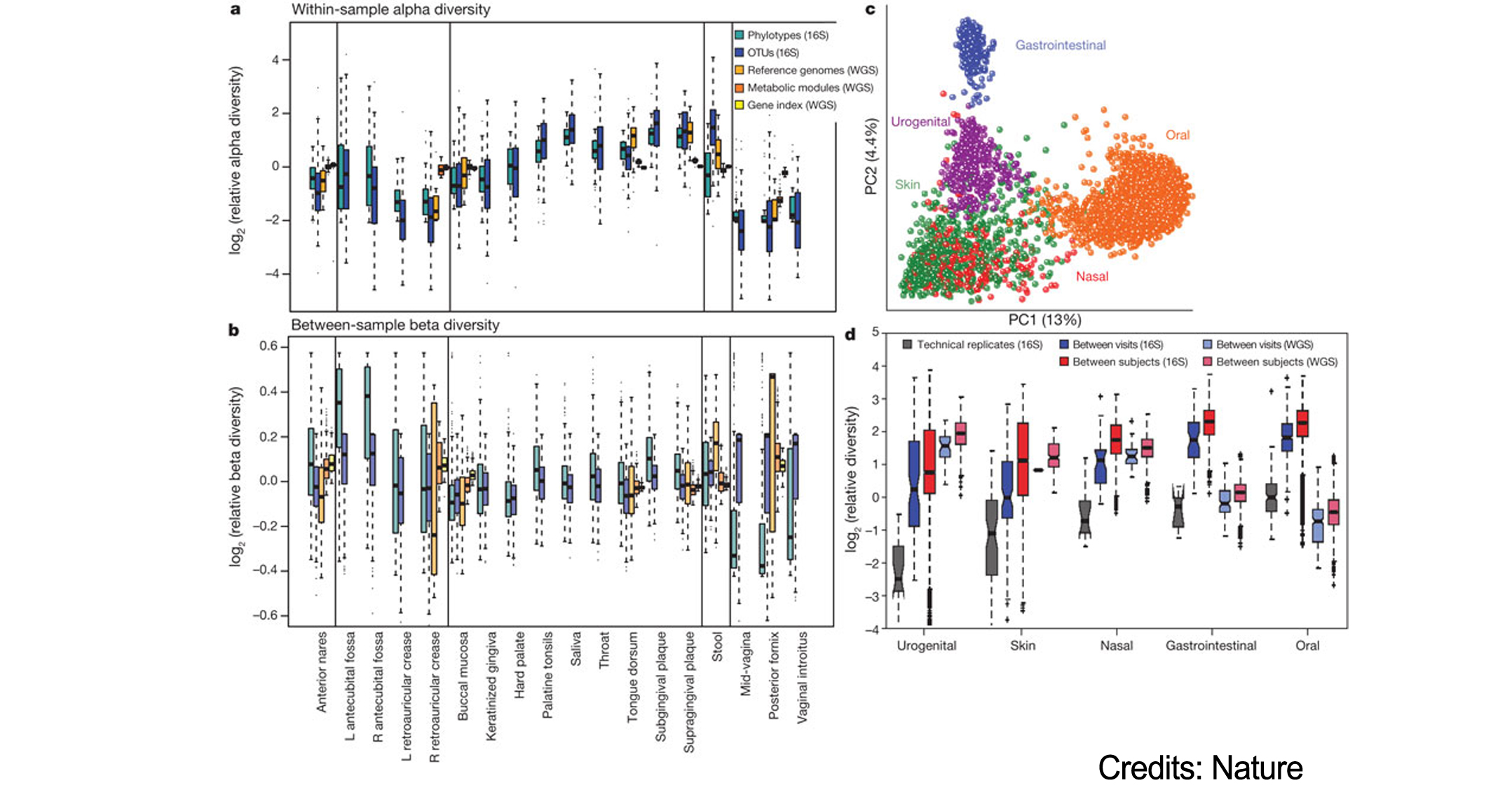The human gut microbiome consists of Bacteria, Archaea, viruses (mainly bacteriophages) and micro-eukaryotes (Human Microbiome Project Consortium). A wealth of data is available on bacterial communities and the focus is only occasionally directed towards the micro-eukaryotic members. Most of the studies have investigated bacterial community composition and structure independent of bacteriophages and micro-eukaryotes. This results in incomplete insight into the overall community, and the impact of non-bacterial members, especially micro-eukaryotes, on diversity and function. To address this issue, Audebert, et al. (2016) investigated the association of Blastocystis colonization with the diversity of human gut bacteria. Briefly, they screened more than 750 faecal DNA samples for presence of Blastocystis and shortlisted 96 samples divided into two major groups, with and without Blastocystis.
The researchers observed that samples positive for Blastocystis had greater bacterial diversity (estimated using 16S rRNA gene amplicon sequencing). Compositionally, bacteria belonging to Ruminococcus and Prevotella were differentially abundant in Blastocystis-positive samples. This is an interesting observation, as both Ruminococcus and Prevotella are considered to be a part of the core microbiota and drivers of the two major community types (also referred to as enterotypes) (Arumugam et al., 2011). Previously, Blastocystis was positively correlated with these two community types and negatively correlated with the Bacteroides community types (Anderson et al., 2015).
Unfortunately, despite having information on the subtype of Blastocystis in the positive samples, the authors did not report if this difference in subtype also had some correlation with the bacterial diversity and composition. How the Blastocystis subtype is associated with pathogenesis and how this relates to the bacterial community remains unknown. On the other hand, does the gut bacterial community play role in determining which Blastocystis subtype is able to colonize? This is also an intriguing question.
The findings of this study have unravelled an extra dimension to the variables (such as diet and lifestyle) associated with bacterial diversity and composition in the human gut. Recently, a large number of factors and their association with gut bacteria were reported in more than 2000 Belgian and Dutch individuals (Falony et al., 2016). However, association of Blastocystis with gut bacteria was not reported. Large population level studies in the future, investigating the association similar to Audebert et al. and incorporating the influence of Blastocystis subtype on gut bacteria, will be necessary. Overall, results thus far point towards the need to untangle whether bacterial community structure and function impacts Blastocystis colonization or vice versa.
References:
The Human Microbiome Project Consortium. Structure, function and diversity of the healthy human microbiome. Nature 2012; 486: 207-214.
Audebert Christophe, et al. Colonization with the enteric protozoa Blastocystis is associated with increased diversity of human gut bacterial microbiota. Scientific Reports 2016; 6.
Arumugam M, et al. Enterotypes of the human gut microbiome. Nature 2011; 473: 174-180.
Andersen, LO, et al. A retrospective metagenomics approach to studying Blastocystis. FEMS microbiology ecology 2015
Falony G, et al. Population-level analysis of gut microbiome variation. Science 2016; 352(6285): 560-564.


